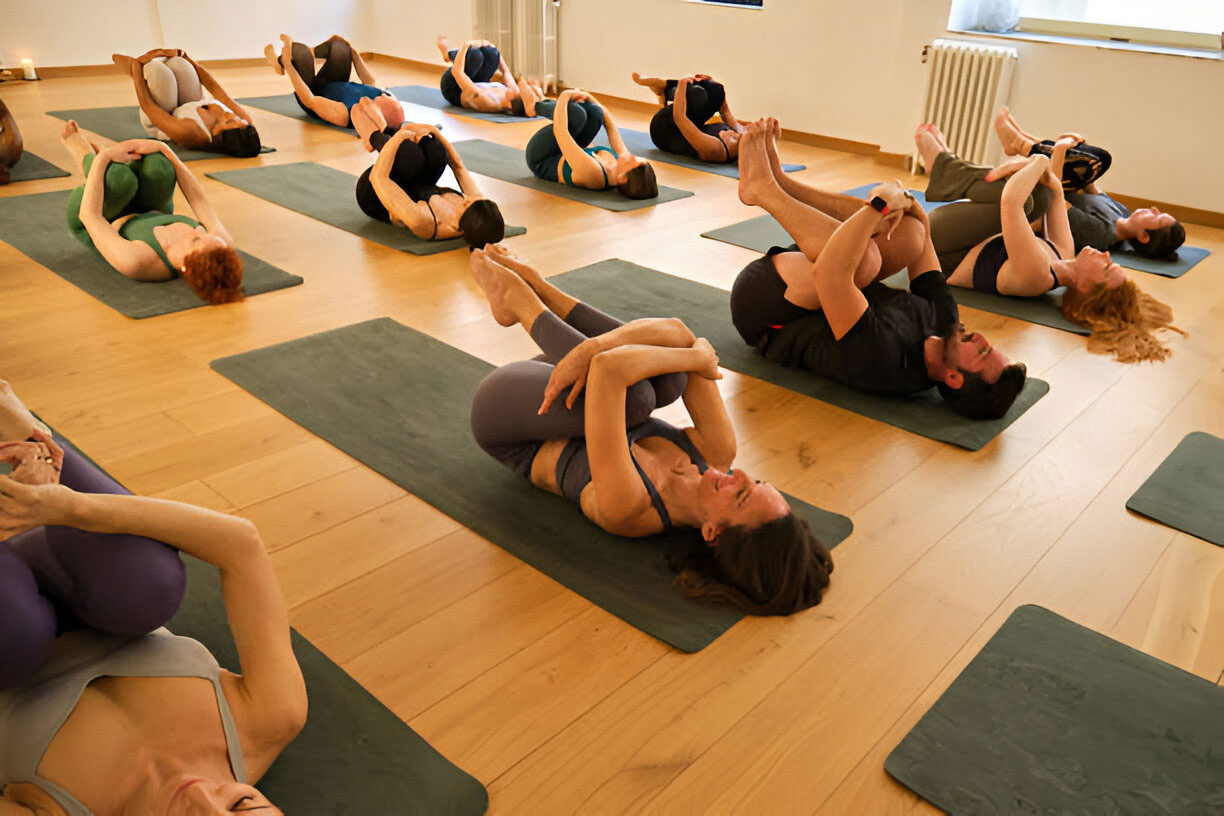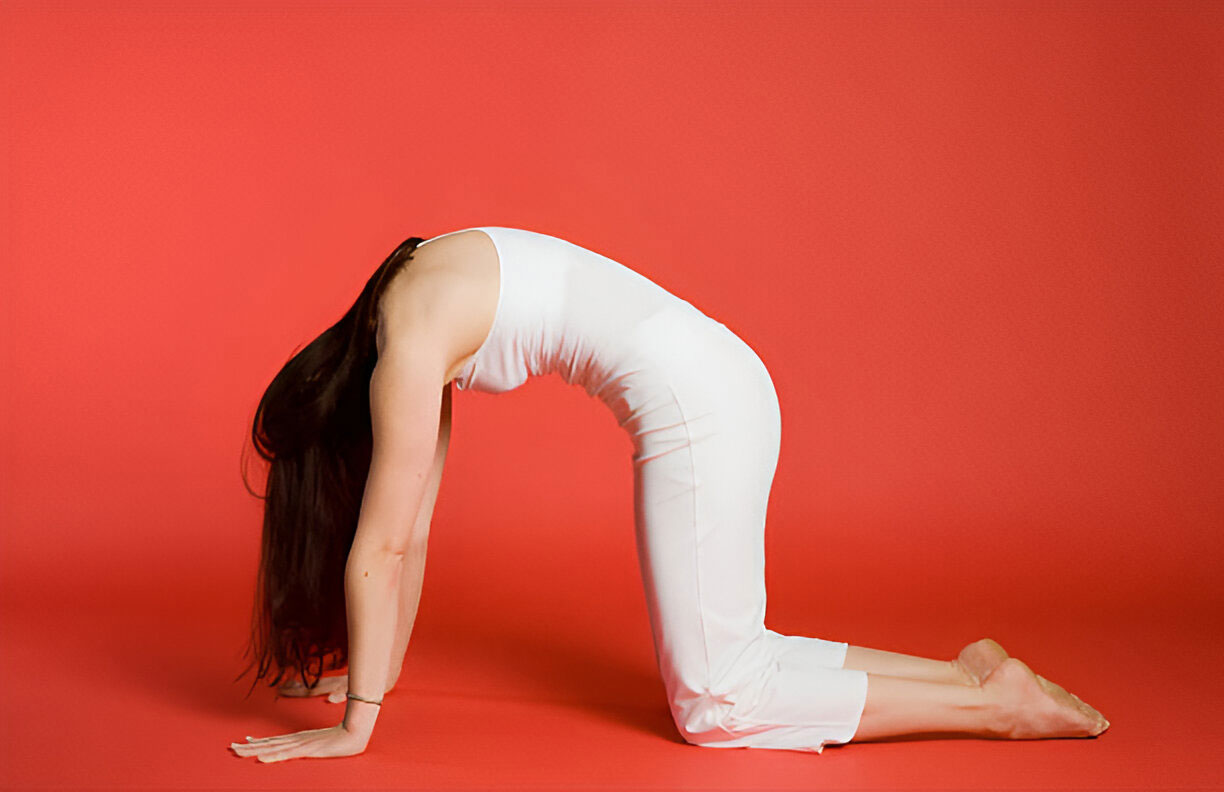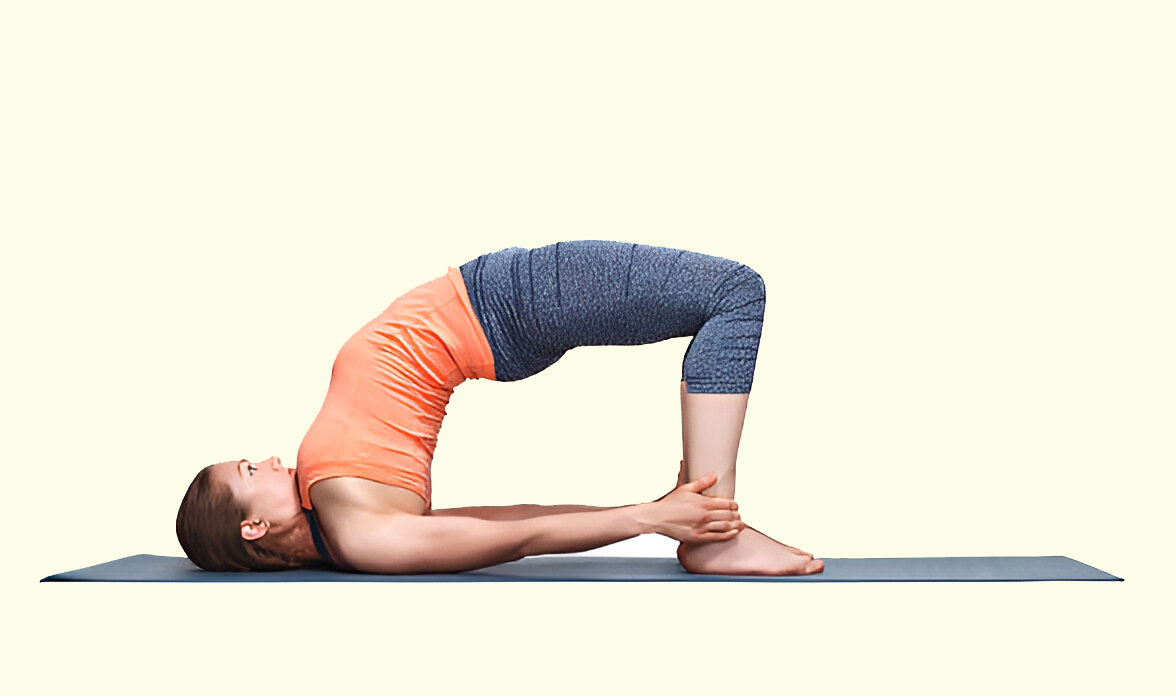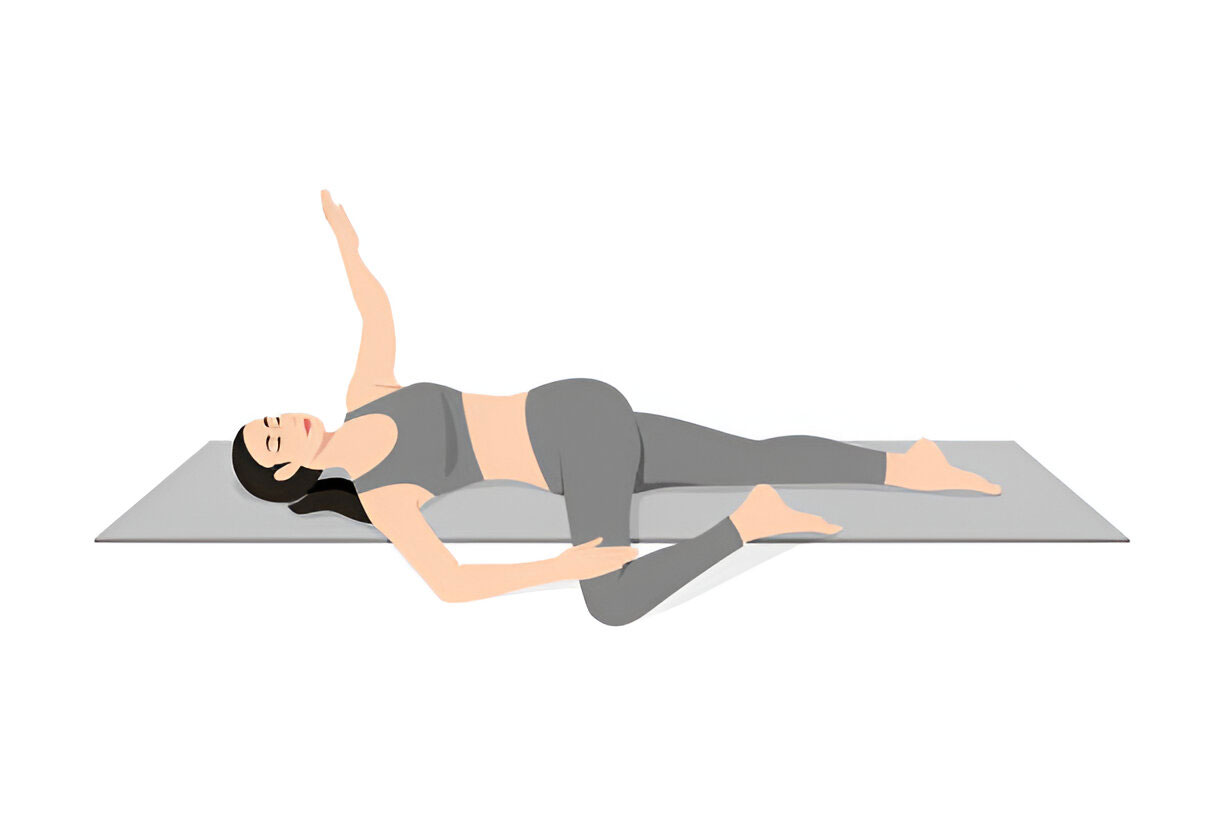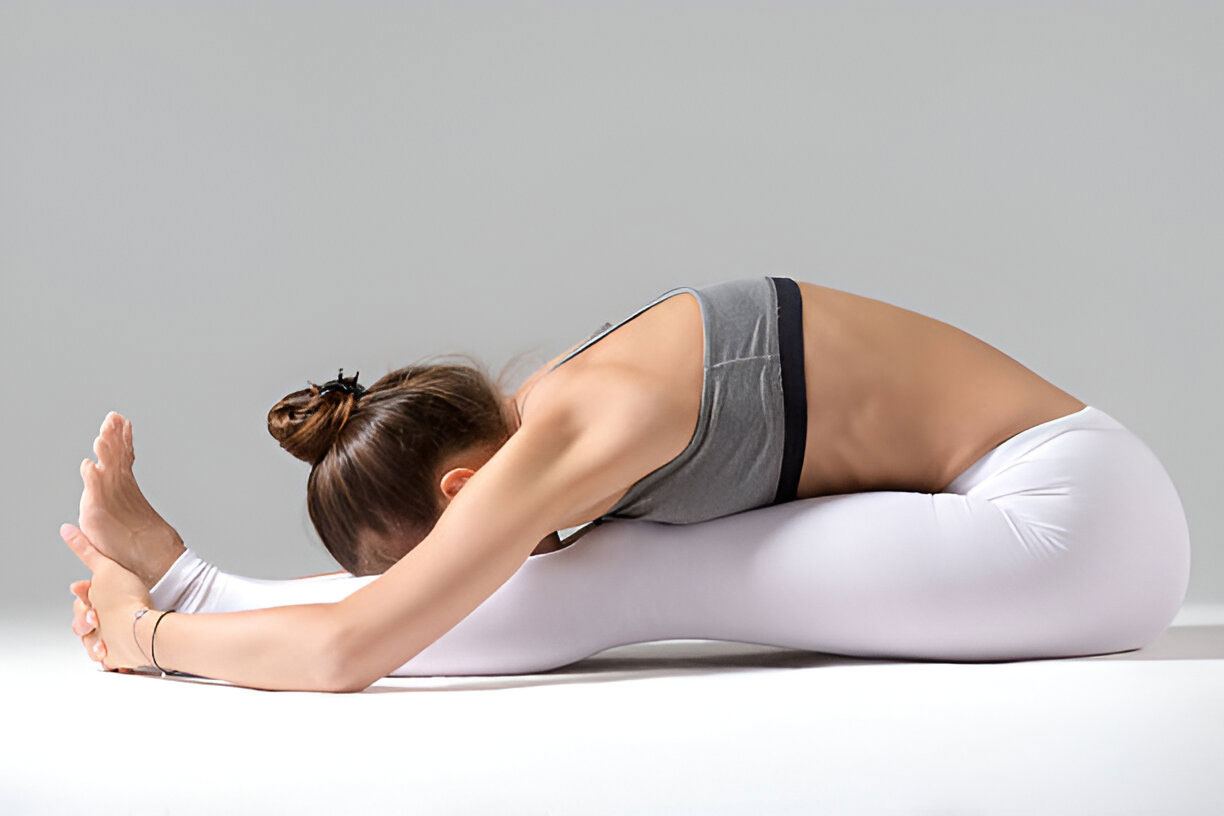Introduction
Digestive issues such as bloating, indigestion, and stomach discomfort are common problems many people face. Poor dietary choices, stress, and a sedentary lifestyle contribute to these issues, affecting overall well-being. Yoga, with its holistic approach, offers a natural and effective solution to improve digestion and alleviate bloating.
This comprehensive guide explores how yoga can be a powerful tool in promoting digestive health. We will discuss specific yoga poses that target the digestive system, improve gut health, and reduce bloating. These poses are suitable for people of all levels and can be easily integrated into your daily routine.
The Connection Between Yoga and Digestive Health
Yoga is more than just physical exercise; it’s a practice that integrates the body, mind, and spirit. When it comes to digestive health, yoga works on several levels:
- Physical Benefits: Yoga poses, or asanas, involve stretching, twisting, and compressing different parts of the body, especially the abdomen. These movements massage the digestive organs, stimulate blood flow, and enhance peristalsis (the movement of food through the digestive tract), which helps relieve bloating and indigestion.
- Breathing Techniques: Pranayama (breathing exercises) are integral to yoga practice. Deep breathing helps activate the parasympathetic nervous system, which promotes relaxation and supports the “rest and digest” function. This is essential for reducing stress-related digestive issues.
- Stress Reduction: Stress is a significant contributor to digestive problems. Chronic stress can lead to issues like irritable bowel syndrome (IBS), acid reflux, and bloating. Yoga helps reduce stress by calming the mind and improving mental well-being, leading to better digestion.
- Detoxification: Twisting poses in yoga help stimulate the liver and kidneys, aiding the detoxification process. Detoxifying the body contributes to better digestion and reduced bloating.
- Mindful Eating: Yoga promotes mindfulness, which can extend to your eating habits. Being more aware of what and how you eat can lead to better food choices, improved digestion, and reduced bloating.
Yoga Poses for Digestion and Bloating Relief
1. Pawanmuktasana (Wind-Relieving Pose)
Benefits:
- Relieves gas and bloating
- Stimulates bowel movement
- Eases indigestion
How to Perform:
- Lie flat on your back with your legs extended.
- Inhale deeply and, as you exhale, bring your right knee towards your chest.
- Clasp your hands around the shin and press the knee gently into your abdomen.
- Hold the pose for 20-30 seconds while breathing deeply.
- Release and switch to the left leg.
- For a deeper stretch, bring both knees to your chest and hold.
Why It Works:
Pawanmuktasana directly targets bloating by compressing the abdomen, helping release trapped gas and aiding digestion. It’s one of the most effective poses for instant relief from bloating and discomfort.
2. Ardha Matsyendrasana (Half Lord of the Fishes Pose)
Benefits:
- Stimulates digestion
- Detoxifies the body
- Relieves bloating
How to Perform:
- Sit on the floor with your legs extended.
- Bend your right knee and place your foot outside your left thigh.
- Twist your torso to the right and place your left elbow on the outside of your right knee.
- Hold the pose for 30 seconds to 1 minute while breathing deeply, then switch sides.
Why It Works:
This seated twist massages the digestive organs and stimulates detoxification, helping to improve digestion and reduce bloating. Twisting poses are especially effective in stimulating the digestive fire (Agni) and promoting the elimination of toxins.
3. Marjaryasana-Bitilasana (Cat-Cow Pose)
Benefits:
- Promotes gut motility
- Relieves constipation and bloating
- Eases stomach cramps
How to Perform:
- Start on your hands and knees in a tabletop position.
- Inhale, arch your back (Cow Pose), lifting your head and tailbone upwards.
- Exhale, round your spine (Cat Pose), drawing your belly button towards your spine.
- Continue flowing between these poses with each breath for 1-2 minutes.
Why It Works:
The rhythmic motion of Cat-Cow pose gently massages the intestines, promoting peristalsis and reducing bloating. This pose also helps relieve tension in the lower back, which can contribute to digestive discomfort.
4. Balasana (Child’s Pose)
Benefits:
- Relieves gas and bloating
- Calms the mind and reduces stress
- Promotes relaxation
How to Perform:
- Start on your hands and knees in a tabletop position.
- Bring your big toes together and sit back on your heels.
- Extend your arms forward and rest your forehead on the floor.
- Hold for 1-3 minutes, focusing on deep breathing.
Why It Works:
Child’s Pose is a restorative pose that relaxes the body while gently compressing the abdomen. The compression helps alleviate bloating and gas, while the calming effect reduces stress-related digestive issues.
5. Setu Bandhasana (Bridge Pose)
Benefits:
- Stimulates digestion
- Strengthens the core
- Eases lower back pain associated with bloating
How to Perform:
- Lie on your back with your knees bent and feet flat on the floor.
- Place your arms by your sides with palms facing down.
- Inhale and lift your hips towards the ceiling, pressing your feet into the floor.
- Hold the pose for 30 seconds to 1 minute, then slowly release.
Why It Works:
Bridge Pose gently compresses the abdominal organs, stimulating digestion and relieving bloating. The pose also strengthens the core muscles, which support healthy digestion and gut function.
6. Supta Matsyendrasana (Supine Twist Pose)
Benefits:
- Stimulates digestion
- Eases bloating and gas
- Relieves lower back pain
How to Perform:
- Lie on your back with your legs extended.
- Bend your right knee and cross it over to the left side of your body, letting it rest on the floor.
- Extend your right arm out to the side and gaze towards your right hand.
- Hold the pose for 1-2 minutes, then switch sides.
Why It Works:
This gentle spinal twist massages the intestines, stimulating digestion and promoting bowel movement. It’s an excellent pose to relieve bloating and support detoxification.
7. Vajrasana (Thunderbolt Pose)
Benefits:
- Aids digestion after meals
- Relieves bloating and gas
- Promotes relaxation
How to Perform:
- Kneel on the floor with your knees together and sit back on your heels.
- Rest your hands on your thighs with palms facing down.
- Sit with a straight spine and close your eyes.
- Hold the pose for 5-10 minutes, especially after meals.
Why It Works:
Vajrasana is unique because it’s one of the few yoga poses that can be practiced immediately after eating. It directs blood flow to the digestive organs and can prevent bloating, making it an ideal pose for improving digestion.
8. Paschimottanasana (Seated Forward Bend)
Benefits:
- Stimulates the digestive organs
- Relieves bloating and constipation
- Calms the mind and reduces stress
How to Perform:
- Sit on the floor with your legs extended straight in front of you.
- Inhale and reach your arms overhead.
- Exhale and fold forward, reaching for your feet or shins.
- Hold the pose for 1-3 minutes, focusing on deep breathing.
Why It Works:
Paschimottanasana compresses the abdominal area, stimulating digestion and promoting bowel movement. It’s also effective for relieving bloating and calming the nervous system, which is important for stress-related digestive issues.
9. Apanasana (Knees-to-Chest Pose)
Benefits:
- Relieves gas and bloating
- Eases stomach discomfort
- Promotes bowel movement
How to Perform:
- Lie on your back with your knees bent.
- Draw your knees towards your chest and clasp your hands around your shins.
- Hold the pose for 1-2 minutes while taking deep breaths.
Why It Works:
Apanasana is a simple yet powerful pose for releasing trapped gas and relieving bloating. The compression of the abdomen stimulates digestion and helps ease discomfort in the stomach.
10. Malasana (Garland Pose)
Benefits:
- Opens the hips and groin
- Relieves constipation and bloating
- Promotes bowel movement
How to Perform:
- Stand with your feet slightly wider than hip-width apart.
- Squat down, keeping your heels on the floor if possible.
- Bring your palms together in front of your chest, pressing your elbows into your inner knees.
- Hold for 1-3 minutes while taking deep breaths.
Why It Works:
Malasana is a deep squat that encourages the downward flow of energy (apana vayu) and promotes bowel movement. It’s a powerful pose for relieving constipation and improving digestion, especially when combined with deep breathing.
11. Uttanasana (Standing Forward Bend)
Benefits:
- Stimulates the liver and kidneys
- Eases bloating and constipation
- Calms the mind and relieves stress
How to Perform:
- Stand with your feet hip-width apart.
- Inhale and lengthen your spine.
- Exhale and fold forward from your hips, reaching towards the floor.
- Hold the pose for 1-3 minutes, allowing your head and neck to relax.
Why It Works:
Uttanasana increases blood flow to the digestive organs, stimulating digestion and reducing bloating. The gentle inversion also helps calm the nervous system, which is crucial for stress-related digestive issues.
12. Tadasana (Mountain Pose)
Benefits:
- Improves posture
- Enhances blood circulation
- Promotes better digestion
How to Perform:
- Stand with your feet together and arms at your sides.
- Distribute your weight evenly across both feet.
- Inhale deeply, stretching your arms overhead.
- Hold the pose for 1-2 minutes while maintaining steady breathing.
Why It Works:
Tadasana may seem simple, but it helps improve posture and core strength, which are essential for healthy digestion. Proper alignment of the spine ensures that digestive organs are not compressed, allowing them to function efficiently.
Tips for Practicing Yoga for Digestion and Bloating
To maximize the benefits of these yoga poses, follow these tips:
- Practice Consistently: Regular practice is key to seeing results. Aim for at least 15-30 minutes daily.
- Focus on Breathing: Deep, mindful breathing is essential for stimulating digestion and calming the nervous system.
- Stay Hydrated: Drinking plenty of water is crucial for digestion and preventing bloating, but avoid large amounts immediately before or during your practice.
- Practice on an Empty Stomach: Perform these poses either in the morning or at least 2-3 hours after a meal for optimal results.
- Incorporate Mindfulness: Pay attention to how your body feels during each pose and listen to your body’s signals.
- Use Props if Needed: Modify poses with props like blocks, straps, or bolsters if necessary to ensure proper alignment and comfort.
- Avoid Overstretching: Engage your core muscles during poses, but avoid pushing yourself too hard. Gentle stretches are more effective for digestion.
Additional Lifestyle Tips for Better Digestion and Reducing Bloating
In addition to practicing yoga, adopting healthy lifestyle habits can further improve digestion and reduce bloating:
- Eat a Balanced Diet: Incorporate fiber-rich foods, fresh fruits, vegetables, and whole grains into your diet.
- Chew Your Food Thoroughly: Proper chewing helps break down food, making it easier to digest and absorb nutrients.
- Eat Smaller Meals: Eating smaller, more frequent meals prevents overeating and reduces the chances of bloating.
- Manage Stress: Incorporate relaxation techniques like deep breathing, meditation, and yoga into your daily routine to reduce stress.
- Stay Active: Regular physical activity outside of yoga, such as walking or swimming, helps promote healthy digestion.
- Establish a Routine: Eating at regular intervals and maintaining a consistent sleep schedule supports overall digestive health.
Conclusion
Yoga offers a natural and holistic approach to improving digestion and relieving bloating. The poses discussed in this article specifically target the abdominal area, helping to stimulate digestion, reduce gas, and relieve discomfort. By incorporating these yoga poses into your daily routine, along with adopting healthy lifestyle habits, you can achieve better gut health and enjoy a life free from digestive issues.
Whether you’re new to yoga or have been practicing for years, these poses are accessible and effective for everyone. Consistency, mindfulness, and listening to your body are key to experiencing the benefits. With regular practice, you can achieve lasting relief from bloating and digestive discomfort, leading to improved overall well-being and vitality.


